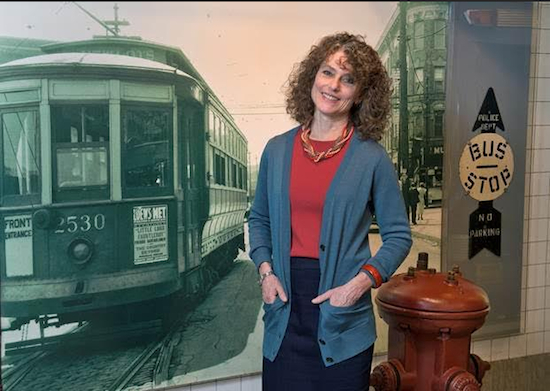Longtime Transit Museum director Shubert to retire after 24 years

The New York Transit Museum, located in a former subway station at Boerum Place and Schermerhorn Street in Downtown Brooklyn, announced Thursday that its longtime director, Gabrielle Shubert, will retire in September.
“This has been a dream job,” said Shubert. “We have never run out of topics to explore, revealing different aspects of New York City’s evolution through the lens of its mass transit systems. It’s the lifeblood of the city — New York would never have become the world’s center of commerce, culture and education without public transportation.”
The Transit Museum opened in 1976, the year of the U.S. Bicentennial, as the New York City Transit Exhibit. The original display was organized by transit employees. It opened in the old Court Street subway station on July 4 and was originally designed to remain open only until Labor Day. It proved so popular that it’s been closed only once since then, for a two-year renovation between 2001 and 2003.

Brooklyn Boro
View MoreNew York City’s most populous borough, Brooklyn, is home to nearly 2.6 million residents. If Brooklyn were an independent city it would be the fourth largest city in the United States. While Brooklyn has become the epitome of ‘cool and hip’ in recent years, for those that were born here, raised families here and improved communities over the years, Brooklyn has never been ‘uncool’.